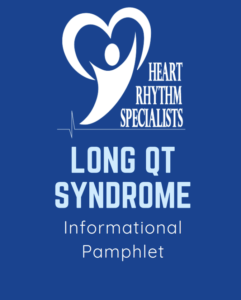What is LQTS?
Long QT Syndrome (LQTS) is a rhythm abnormality in which the Q-T interval is much longer than normal.
The Q-T interval is a measurement of the time it takes the heart to recharge (repolarize) after contracting. LQTS is either inherited or acquired and it is a serious condition that may cause arrhythmias and cardiac arrest.
How is LQTS Diagnosed?
Dr. Yoo will use a combination of
a physical exam, past medical history, family history
and testing, which may include:
- electrocardiogram (ECG/EKG)
- stress test
- electrophysiological (EP) study
- genetic testing
Risk Factors include:
- past family history of LQTS
- low sodium levels
- low potassium levels
Causes of LQTS include:
- Long QT Syndrome mainly occurs in people who have a family history of Long QT as it is a genetic disorder.
- antidepressants
- antiarrhythmics
- antihistamines
- diuretics
Symptoms of LQTS
Although sometimes symptoms
don’t present themselves, they
include:
- fainting (syncope)
- sudden cardiac arrest (SCA)
- seizures
Treatments for LQTS
Treatment for Long QT Syndrome may include:
- medications such as beta blockers
- a pacemaker
- an implantable cardioverter defibrillator (ICD)
- lifestyle changes that minimize risk of arrhythmias and symptoms
Additional Resources
